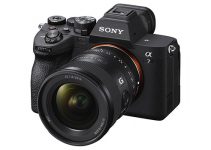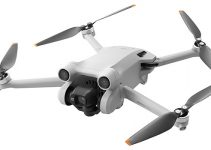It may surprise you, but there are still some folks out there who wonder what justifies the insanely high price tag of a professional cinema lens when compared to a regular photo lens such as the Canon’s “Nifty Fifty” plastic toy. From a professional point of view, the choice is more than obvious, especially when it comes to build quality, form factor, focus and aperture control, optical design, and whatnot.
But, let’s find out what are the practical differences while filming with these two lenses in a real-world environment. In the next video, Sawyer Hartman compares the entry-level Canon 50mm f/1.8 to the Canon CN-E 50mm T1.3 LF regarding sharpness, color reproduction, low-light capabilities, and build quality alongside all other minor differences that he was able to find out during testing.
When looking at the sharpness of the shots taken with both lenses, one would assume that the cinema lens would be far superior to its dirt-cheap counterpart. Surprisingly, both units performed impressively well with sharp, clean images as seen by the shots of the focus chart. Hartman did note, though, that the cine lens is slightly sharper across the board, whereas the Nifty Fifty’s footage seems to be softer and blurrier, especially towards the edges of the frame.
As for color reproduction, both lenses again performed comparably to one another. While Harman didn’t spot any variations in regard to color rendition, he noticed a difference between how light enters each lens. In the shot with the female model, for instance, you can see that the light falloff is smoother when using the cine lens. Plus, there is a bit more detail and light in the shadows regardless of the fact that both lenses were set to the same aperture of f/1.8.
The most significant differences between the two lenses, however, is in their build quality and optical design. Unlike the plastic construction of the Nifty Fifty, the Canon CN-E 50mm T1.3 LF Cine Lens is made of an all-metal construction which translates into durability, perfect for tough-to-shoot environments.
The cine lens also has a longer focus throw which allows the user to accurately dial in their focus when shooting, compared to the regular 50mm lens whose short focus throw makes it challenging to keep track of an object moving within a certain distance.
The aperture blade count marks a significant difference between the lenses as well. The Canon 50mm f/1.8 prime has seven blades whereas the cinema lens boasts six more. As a rule, having more blades produces smoother edges in the bokeh, giving a more polished and professional look to the image.
Lastly, there are a few more essential characteristics of each lens that make them different. The lack of any autofocus capabilities on the cine lens could be considered as a drawback by some videographers who predominantly use the auto-focus function of their camera, making it difficult to nail focus quickly.
Despite the lack of autofocus, however, what you gain with cine lenses is the increased consistency in terms of performance and usability. Each prime cinema lens has similar properties such as glass elements and thread filter sizes meaning that when changing lenses, you don’t have to get an entirely new set of filters or adjust your aperture all the time.
On the other hand, the Nifty Fifty is still an excellent buy for those who are just starting out and need to work on a minuscule budget. Even though it doesn’t have features such as a long focus-throw or thread-size consistency, it’s still an incredibly affordable piece of glass that’s compact enough to carry around and capable of producing some lovely images.
[source: sawyerhartman]
Order Links:
Canon EF 50mm f/1.8 STM Lens (B&H, Amazon)
Canon CN-E 50mm T1.3 L F Cine Lens (B&H, Amazon)
Disclaimer: As an Amazon Associate partner and participant in B&H and Adorama Affiliate programmes, we earn a small comission from each purchase made through the affiliate links listed above at no additional cost to you.



